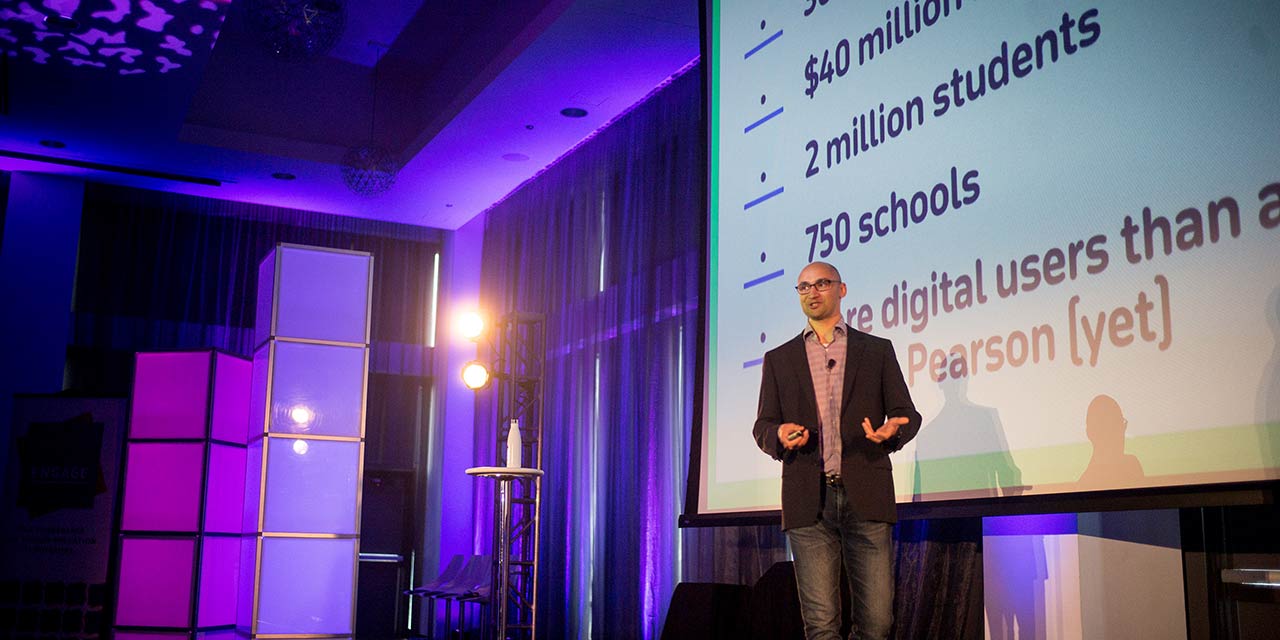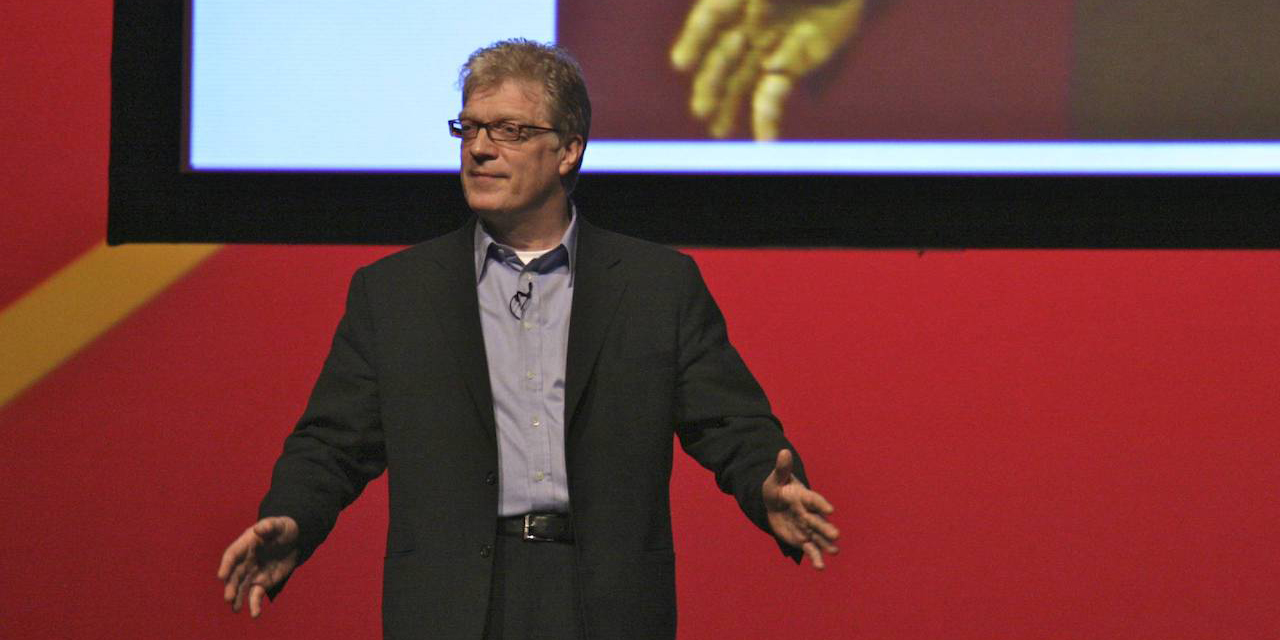Sir Ken Robinson is an internationally acclaimed expert on creativity and innovation, and the author of The Element; Finding Your Element; Out of Our Minds; Creative Schools and You, Your Child and School.
His TED talk “Do Schools Kill Creativity?” is the most watched TED Talk in history has been seen by an estimated 300 million people in over 150 countries.
Sir Ken delivered the keynote address at Top Hat’s Engage 2018 conference in Chicago, but ahead of that, he answered our questions about agile classrooms, diverse teaching styles and subjects, and the roles of technology in teaching and learning.
Q: You’ve criticized traditional K–12 education for inhibiting students’ creativity. By the time students reach higher education, is it too late for lecturers to work with people who have gone through this ‘industrial system’?
Let me say what I mean by the industrial model of education. Mass systems of education mainly came about in the 19th century in the context of the Industrial Revolution. They were designed to meet the social and economic needs of industrialism, and these needs deeply affected the organization and culture of elementary and high schools.
These systems of education have an industrial character in several senses. First, they emphasize conformity and standardization. They were intended to inculcate certain skills and mindsets in the people who were destined to take on different roles in the industrial economies. Second, they are linear: they are designed around various gateways, which students need to get through to progress to the next stage. Third, they’re focused on particular types of output and consequently generate lots of “waste product”.
These systems are rooted in a relatively narrow view of intelligence. For example, vocational programs are generally seen as a lesser species than academic degrees, which is why going to college to do an art course or a dance program is commonly seen as less demanding than studying for academic degrees in universities. The good news is that some of these practices and assumptions are breaking down and young people are not as enthralled now with the idea of going to university as my generation was.
Universities have important roles in bringing about the changes that are now needed in education as a whole. Some universities have long been centers of innovation and radical thinking. The cultural and economic circumstances we’re now living in require a radical rethink of how universities work as a sector and of what they’re really for.
We’re seeing a huge push in higher education towards engineering, software engineering in particular, to feed the tech industry’s needs. It seems like that’s replicating the industrialized system for a new industrial revolution.
It’s as well to remember that higher education is a business, and it relies on attracting enough paying customers, whether those paying the bills are the taxpayers or individuals writing their own checks. Currently there’s a demand for more courses for software designers and engineers and some universities are trying to meet that demand. That’s not a bad thing in itself. It is a contemporary example of the supply and demand model on which mass education systems were founded. The problem is that a linear model of supply and demand doesn’t work comfortably in education.
For example, demand may suddenly change. There’s a risk that those being trained for existing roles in technology may find those roles changing radically or disappearing altogether in the years ahead. In the meantime, the emphasis on STEM disciplines is creating casualties in other disciplines that to some may seem less relevant to the current needs of the economy, including the arts and humanities.
Nonetheless, these disciplines are vital in providing all students with the balanced, thoughtful and ethically sensitive forms of education that they now need more and more. As AI and other digital technologies continue to transform all areas of everyday life, education has to develop in students the skills, qualities, and characteristics that are uniquely human, including those that are cultivated by knowledge and understanding in the liberal arts. It’s a delicate balance and one that higher education has to get right.

Top Hat CEO Mike Silagadze gives his keynote speech on the Future of Higher Education at Engage 2017, Chicago, October 1. Photograph: Black Rhino Creative
Q: What does your vision for an agile classroom look like? What does it mean to be an agile teacher?
The core role of a teacher is to facilitate learning. The concept of agility in teaching and learning nicely captures the idea that education has to be active, nimble and responsive. It conveys a sense of vitality rather than passivity.
Education has to cultivate many different forms of understanding. They include factual information and theoretical propositions; the practical skills of making things and making things happen; and knowledge about the nature of human experience—of what it is to be a person, to be in a relationship with others and why we feel as we do about our experiences. These all require different strategies in teaching and learning.
If you want to learn a language, you’re better practicing with someone who speaks it rather than just sitting down with a vocabulary test. If you’re learning how to fix an engine, there’s a qualitative difference between reading about it in a manual and stripping an engine down and putting it back together again.
People learn in different ways and at different rates. In any class—whether it’s five or 30 people—there’s likely to be diverse set of individuals with different abilities, interests, moods and dispositions. Good teachers are sensitive to those differences and tack and weave accordingly.
They draw from a wide repertoire of activities, techniques, and strategies, and adapt them to the needs of the learners and the material.
Q: How should an instructor use technology in the classroom well, rather than using technology for its own sake?
Technology is the design and use of tools. A pencil is technology. So is a piece of paper or a book or a laptop. These days when we talk about technology, we tend to have in mind digital tools, and in many ways they do what all tools have always done. Good tools do two things. First, they extend our physical capabilities. They enable us to do things that would be physically difficult or impossible. For example, the bow and arrow enabled early hunters to capture prey which they couldn’t have done unassisted. Good tools also extend our minds: they enable us to think things that might otherwise be inconceivable. The telescope helped astronomers to see the skies more clearly: it also helped them rethink our place in the cosmos. The electric pickup made instruments louder: it also facilitated forms of music that were otherwise unimaginable.
Technology has always gone hand in hand with human culture and innovation. The challenge is in knowing how to use the tools. Faced with the immense capacities of a desktop computer, some people just use it as a fancy typewriter. Others compose symphonies and elaborate works of visual art. The machine doesn’t have the ideas—at least not yet—the users do. The tools we have available now have fantastic potential to enhance education in almost every direction. They can bring the whole world into the classroom. They can connect us in ways we couldn’t before. They give us tools for creative production, which are unprecedented. It’s all about knowing how to use them.
Digital tools can have a big downside. For example, more and more people are coming to see that social media have toxic consequences, which weren’t anticipated. These tools don’t replace the need for teachers to understand how learning works and what their roles as teachers are. They do offer unprecedented opportunities to enhance education in ways that we couldn’t before. We still haven’t properly woken up to that potential.
Q: If there were one quick change that a instructor or professor could make to the way that they teach, what do you recommend it should be?
It’s vital to see teaching and learning as a conversation, not a monologue. Learning is a social and a cultural process: we learn with and from each other. It can be immensely valuable for lecturers to stand in front of the class and tell students what they know; it depends how good they are at doing that. The challenge for all teachers is to engage people’s minds and their hearts in the ideas and materials that they find so fascinating. Great teachers understand that learning is a conversation, not a monologue. Seeing teaching and learning as a dynamic process, rather than a one-way channel of transmission is at the heart of this.
This interview has been edited and condensed for clarity and length.
Watch an excerpt of Sir Ken Robinson’s Engage talk here.


